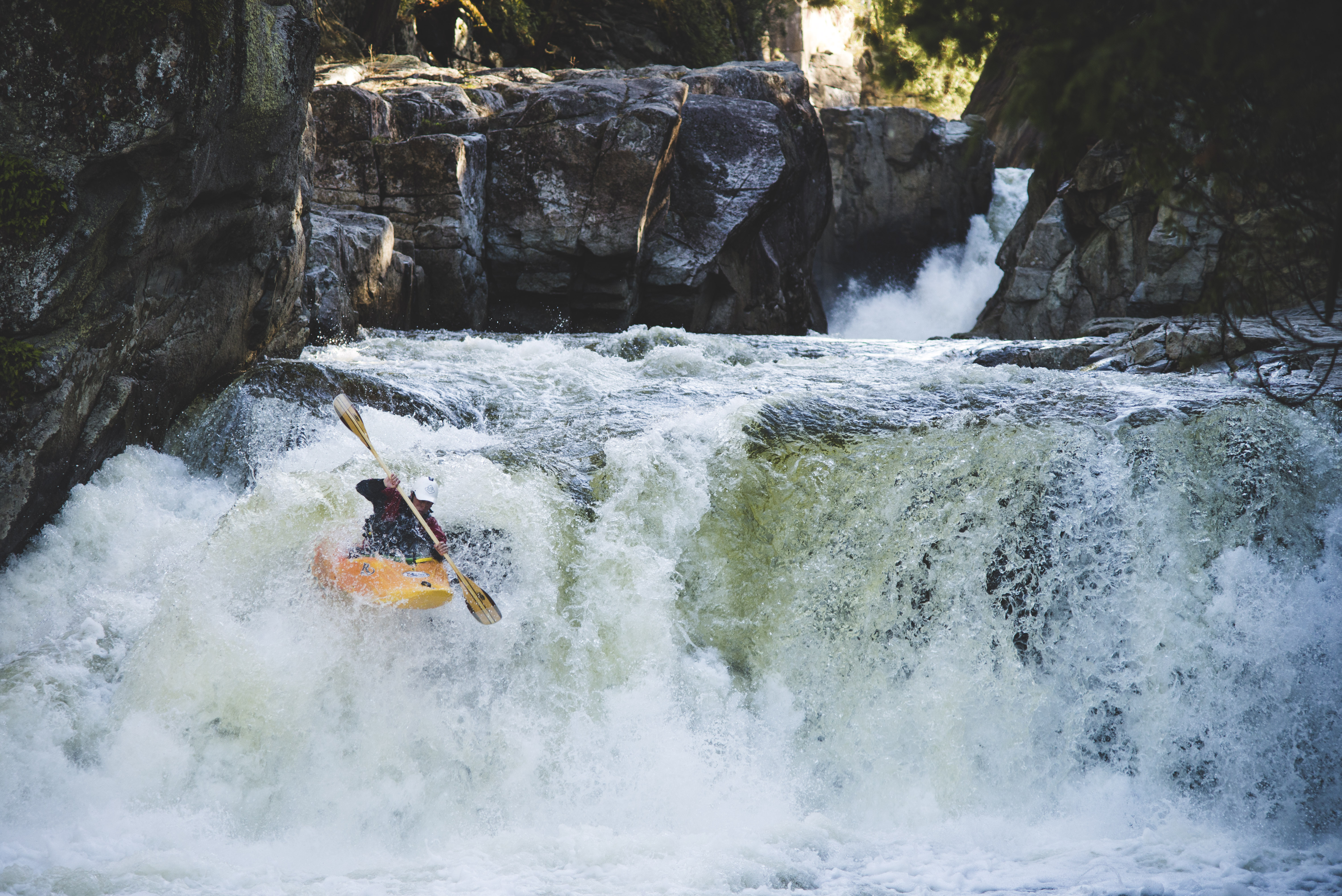
Submitted by Guest Blogger: Eric Adsit
The Whiteface Region is well known as a world-class destination for hiking, mountain biking, and of course skiing and snowboarding, but something has been overlooked: the whitewater kayaking. The same streams that harbor gorgeous rainbow trout tumble down rocks and ledges which make up a veritable playground to the trained eye of a whitewater paddler.
I’m ashamed to say I spent over a decade passing by the rivers of the region, always peering over the guard rail along Route 86, but never stopping long enough to put on my gear and pull my boat down from the roof rack. I was always running late for something, or the water looked too low, too high, too cold. Endless excuses that all equated to me being lazy.
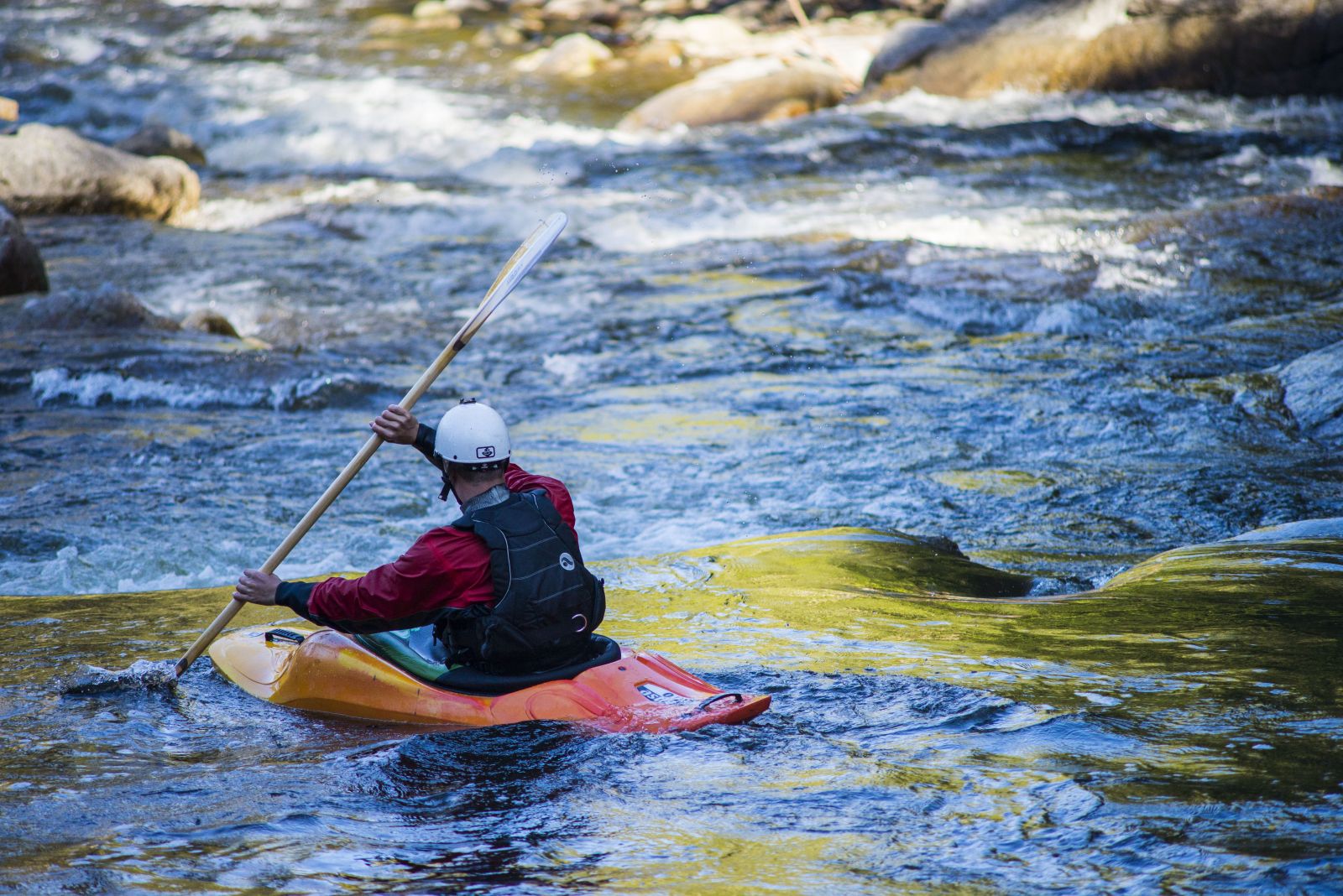
Bucket List
This past spring, I promised myself I would take the time to explore the rivers that had called to me for so long. Sometimes making the commitment is the hardest part.
There are over 300 stretches of whitewater listed on the American Whitewater database for New York, and dozens more that aren’t listed. It can be incredibly challenging to drive past a river you know in favor of diving into one that you don’t, but knowing what I do now about the rivers around Whiteface, I won’t hesitate again.
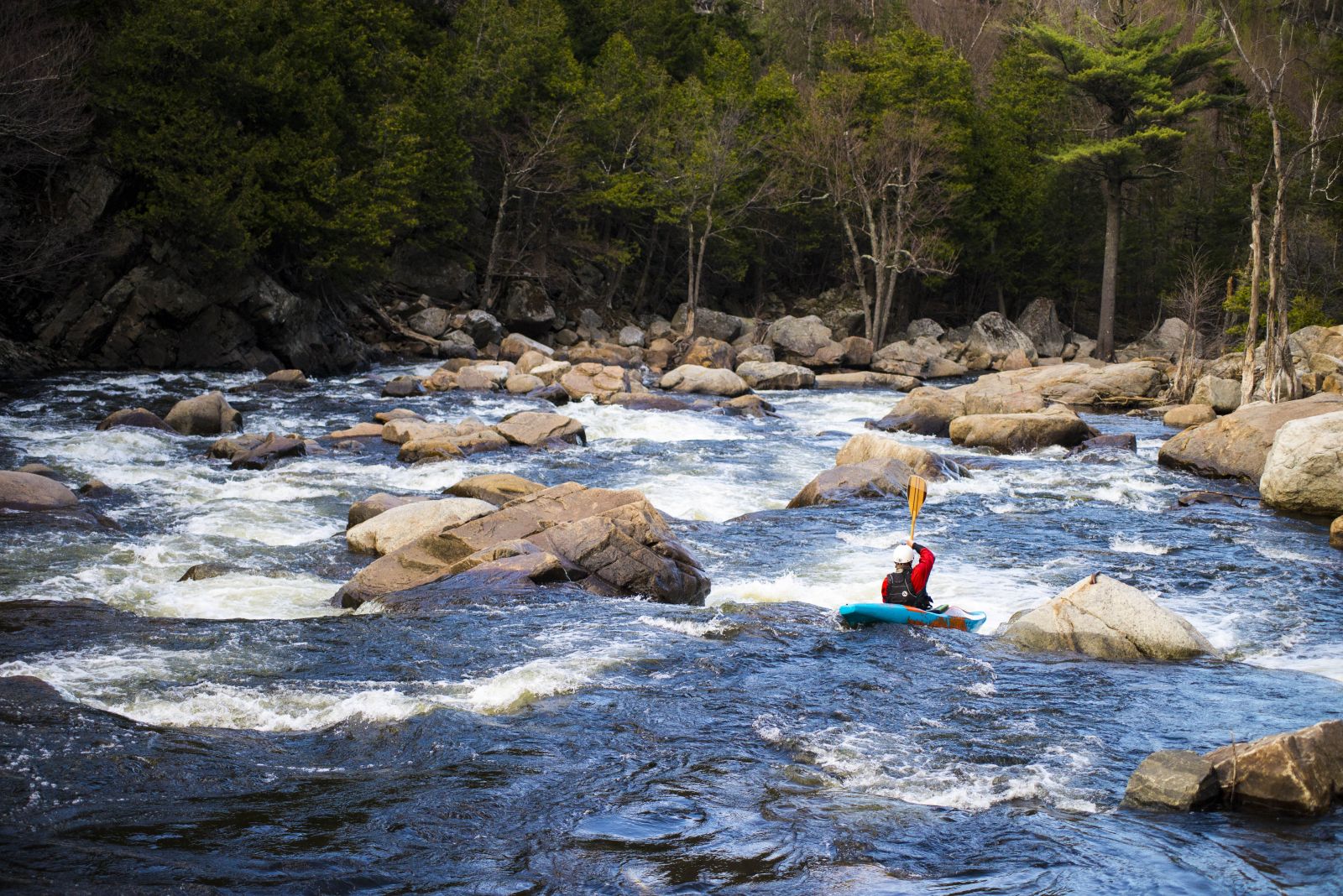
Where to begin?
I started my sampling of Whiteface whitewater at the Jay Covered Bridge, dipping into the Ausable River for a remarkably fun natural waterslide with a few different channels. The easy access to both the top and bottom of the slide mean it’s easy to run several laps with minimal effort. The different channels down the left, right, and center give the drop some extra character, even when the water is low.
I started down the left channel first, using a wave as a natural ramp to fly over the hole at the base of the first ledge. I was quickly swept downstream through a narrow chute, blasting through a few more waves before catching an eddy. A short walk back upstream brought me to the center chute, where the river drops steeply over a smooth bedrock dome.
It wouldn’t be a stretch to call the falls in Jay a little slice of the California Sierras, right here in the Adirondacks. After a few successful runs, I laid out my gear in the sun to dry and found myself doing the same. The naturally sculpted rock was just too inviting, especially as it reflected the heat from the late spring sun.
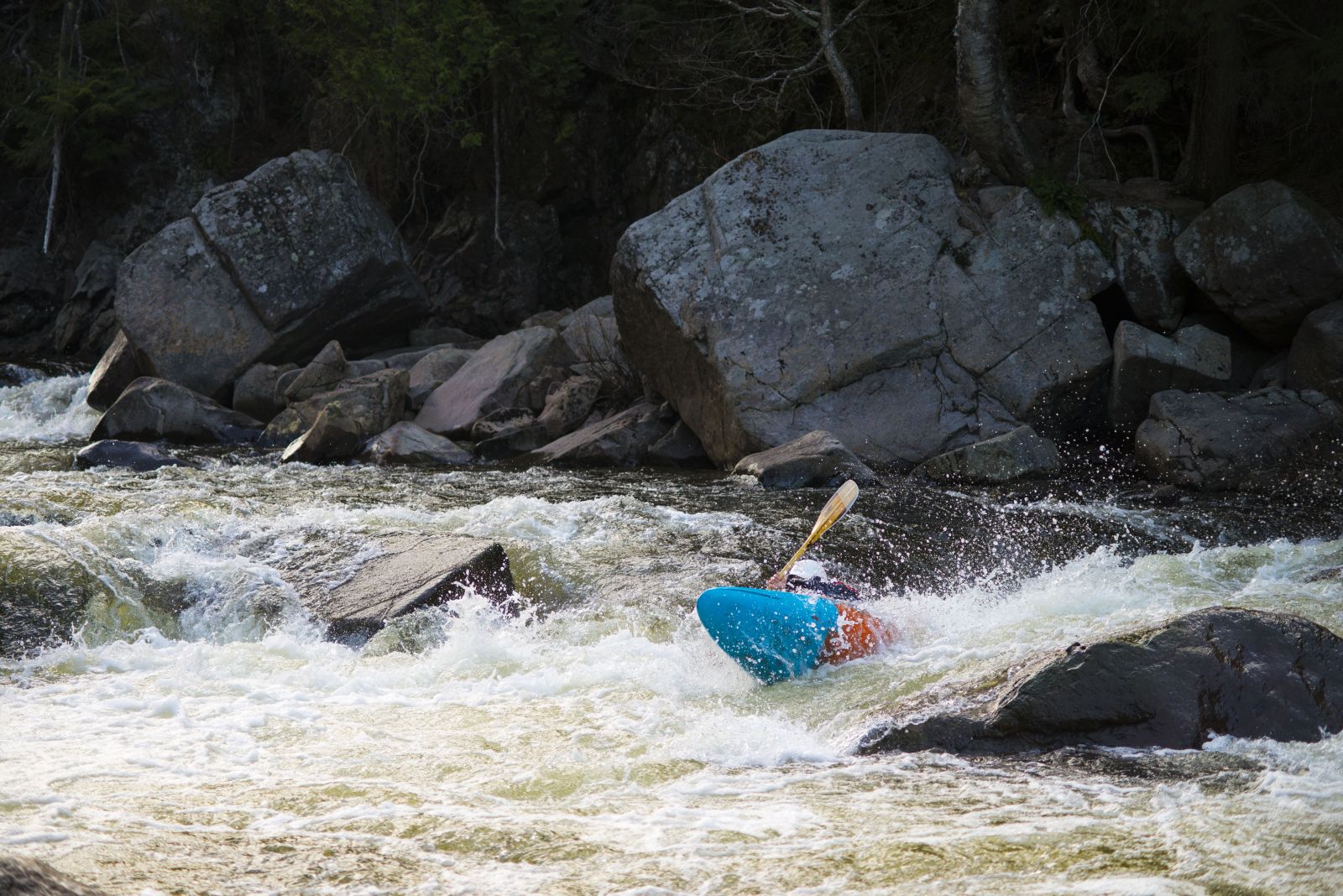
Who's with me?
After a few quick text exchanges with some friends and friends of friends, I met up with Langton Douglas for an after work trip down the Wilmington Flume. While the bulk of the mini-gorge has only been attempted a handful of times by expert paddlers, it’s easy to put in just above the last waterfall for some low-stress fun. The line is still relatively narrow, requiring a paddler to avoid a shallow landing on the left and a folding flume on the right, but the consequences of a mistake are much less severe than just upstream.
I was blown away by the late afternoon sunlight filtering through the trees and catching on the mist from the falls, so much so that I nearly stumbled into the river at least a handful of times. Langton displayed ceaseless enthusiasm, running the ten-foot waterfall over and over again while I found different angles to photograph it from. Before long I had packed my camera away and followed suit, enjoying the blissful moment of freefall, and scrambling back up the river bank to do it all again.
The whole time, the fly fisherman just downstream shook his head with a smile, calling us “crazy… in a good kind of way.” When our legs and shoulders grew too tired to make the short carry back upstream, we made our way back to the cars. Although it was our first time paddling together, I knew we’d see each other on the river again.
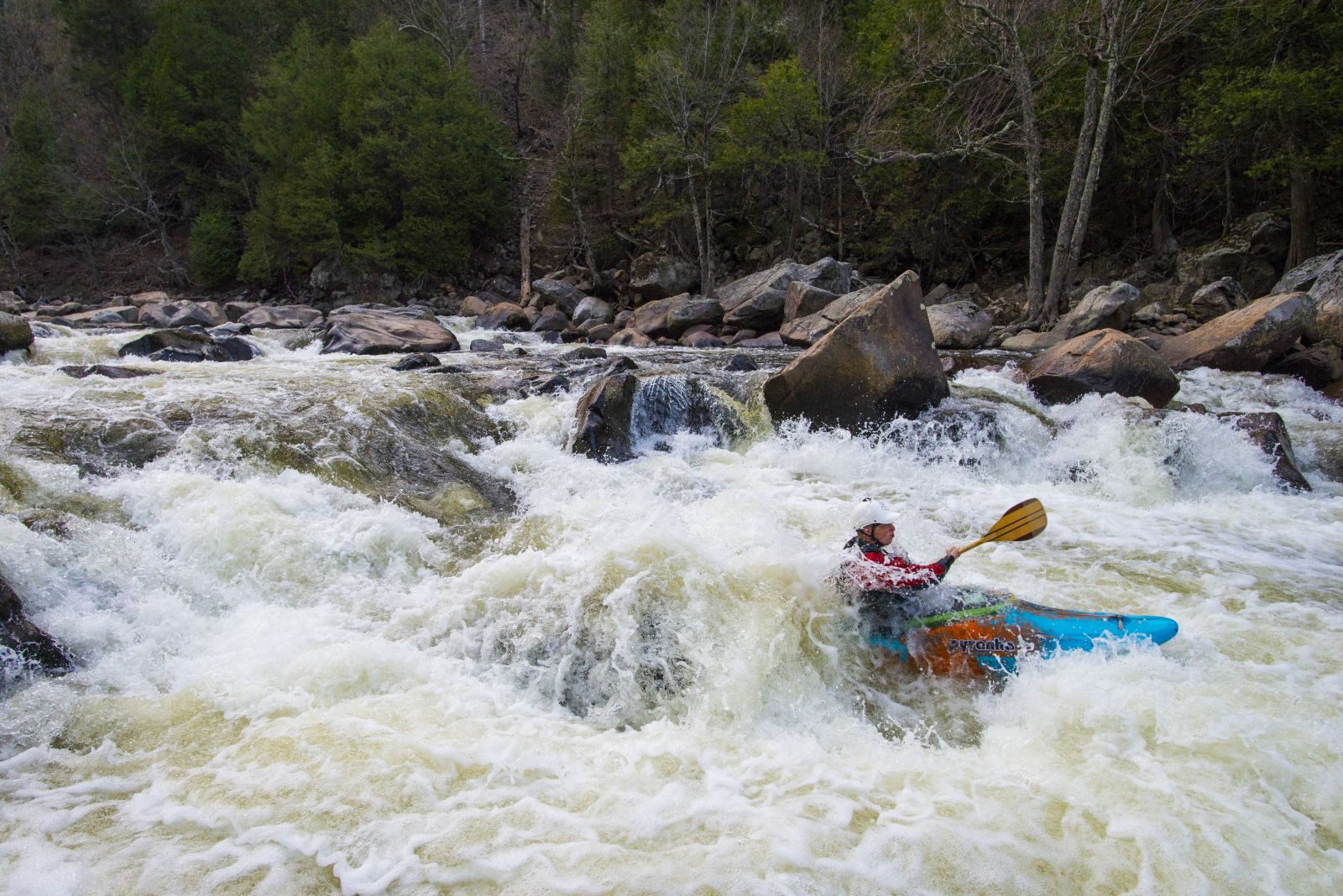
Fancy meeting you here
The very next day, Langton and I met up for another after work trip. We put in on the West Branch of the Ausable at the Copperas Pond pull off and picked our way through the long boulder garden along Route 86. I had driven by this stretch of river too many times to count, and it felt like a dream to finally take those paddle strokes.
While the Notch section of the West Branch wasn’t exceptionally challenging, it was incredibly beautiful. One of the best parts about paddling roadside rivers is the extra time you have to stop and look around. So much of the scenery in the Wilmington Notch is lost when you’re traveling at 45+ miles-per-hour.
On the river, I had time to admire the crags, the trees, and the brightness of the newly budding leaves. And that’s not to say that the whitewater wasn’t fun. There seemed to be an endless number of eddies to catch, boulders to launch over, and slots to slide through. I imagine the difficulty increases exponentially as more water flows through the river, turning the maze of boulders into a freight-train of whitewater (a different kind of fun), but I was struck by how well the river channelized at low water. We even finished the run with enough time for Langton to make it home in time for dinner!
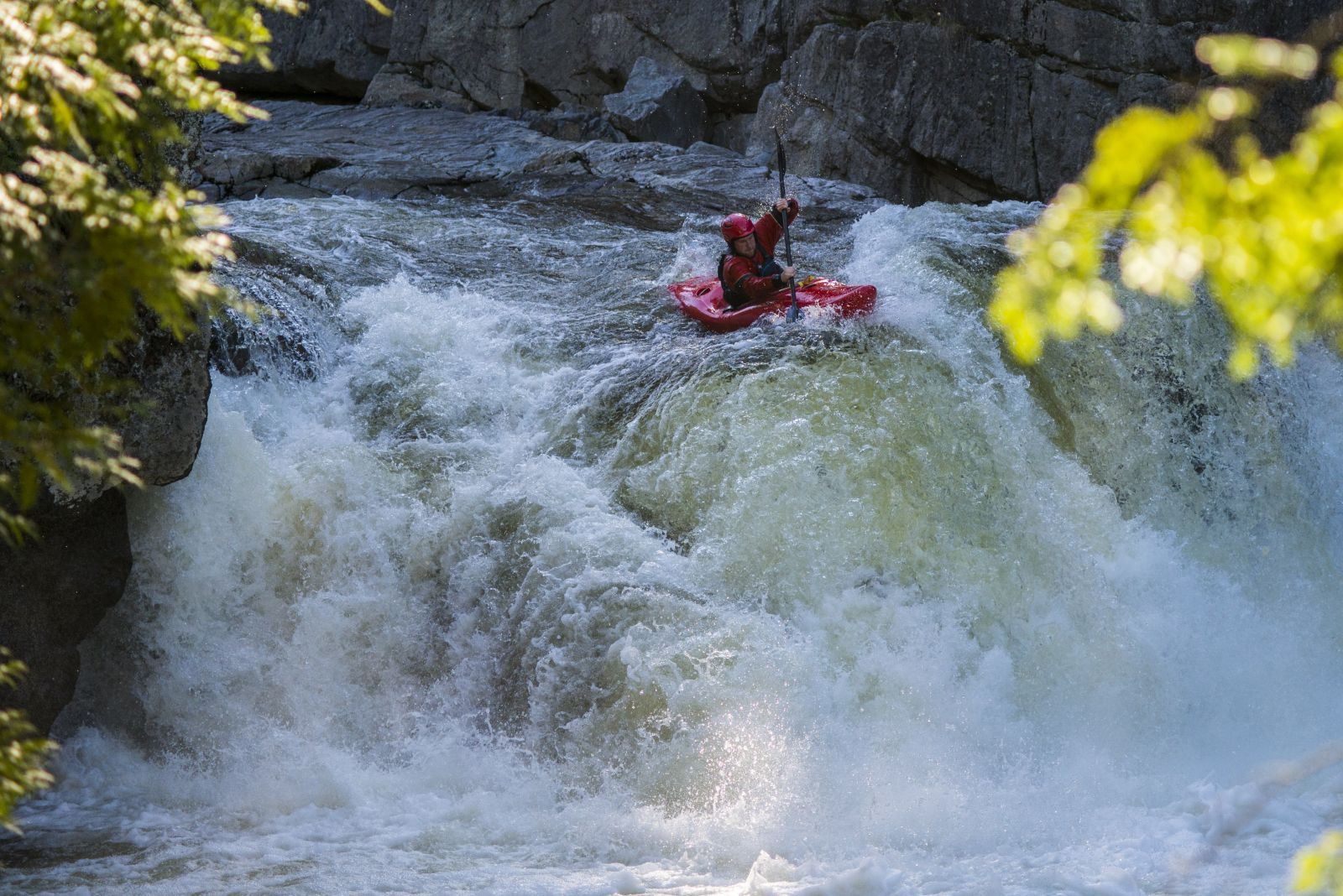
In conclusion...
While it’s true the rivers in the northeast depend on fickle rain and/or snowmelt events to reach runnable flows for whitewater paddlers, it takes much less water than I ever imagined to make a great paddling weekend in the Whiteface Region. I’m sure I only scratched the surface of what is available to paddle, but the quality of the rapids, the scenery, and the community will certainly draw me back before long.
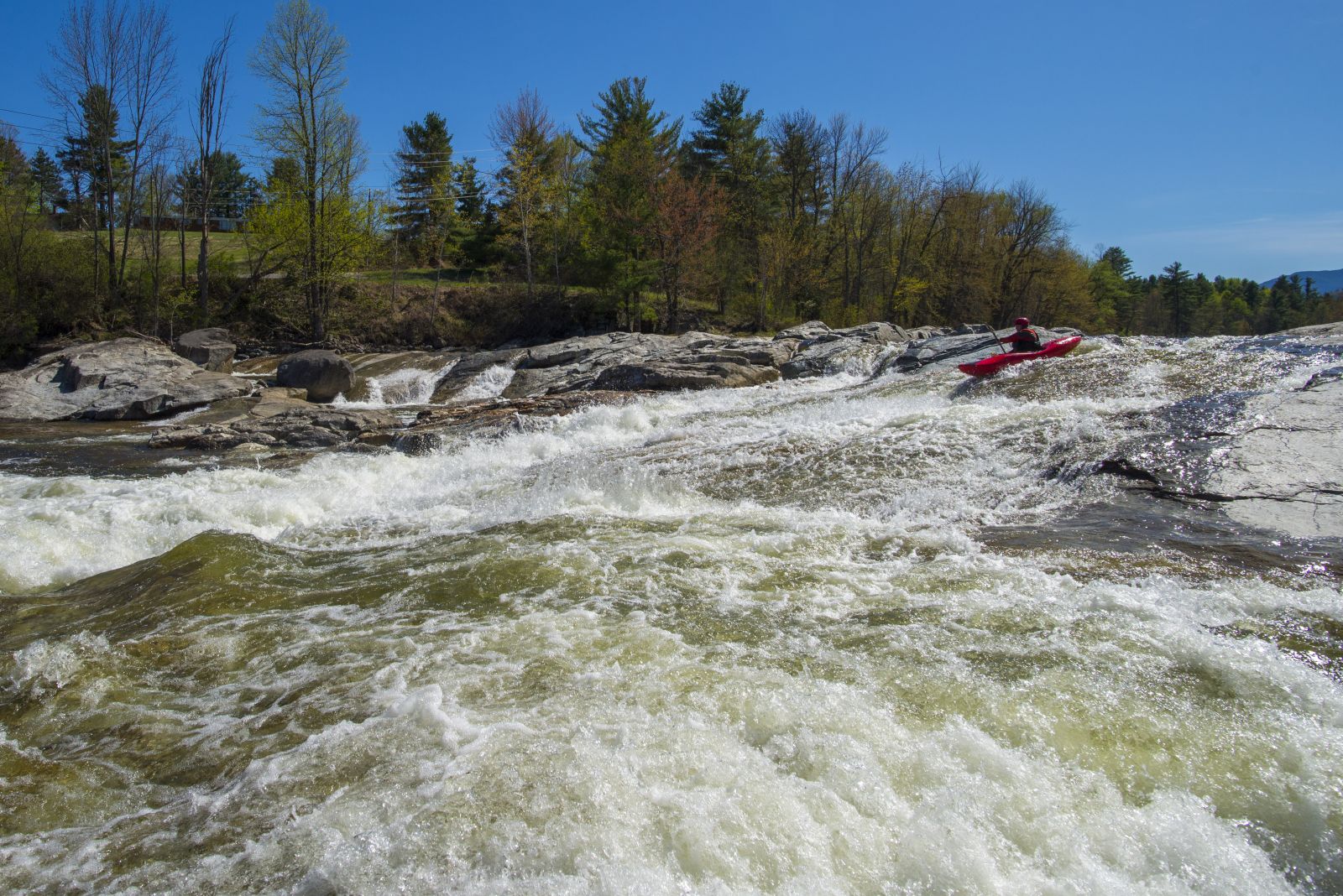
Why not come try it out for yourself? Stay close to the river, spend your day paddling the perfect channel, and then head into town to reenergize with a great meal!
This week in other ADK stories:
Paddling the ponds in Saranac Lake
5 Lake Champlain fishing facts
